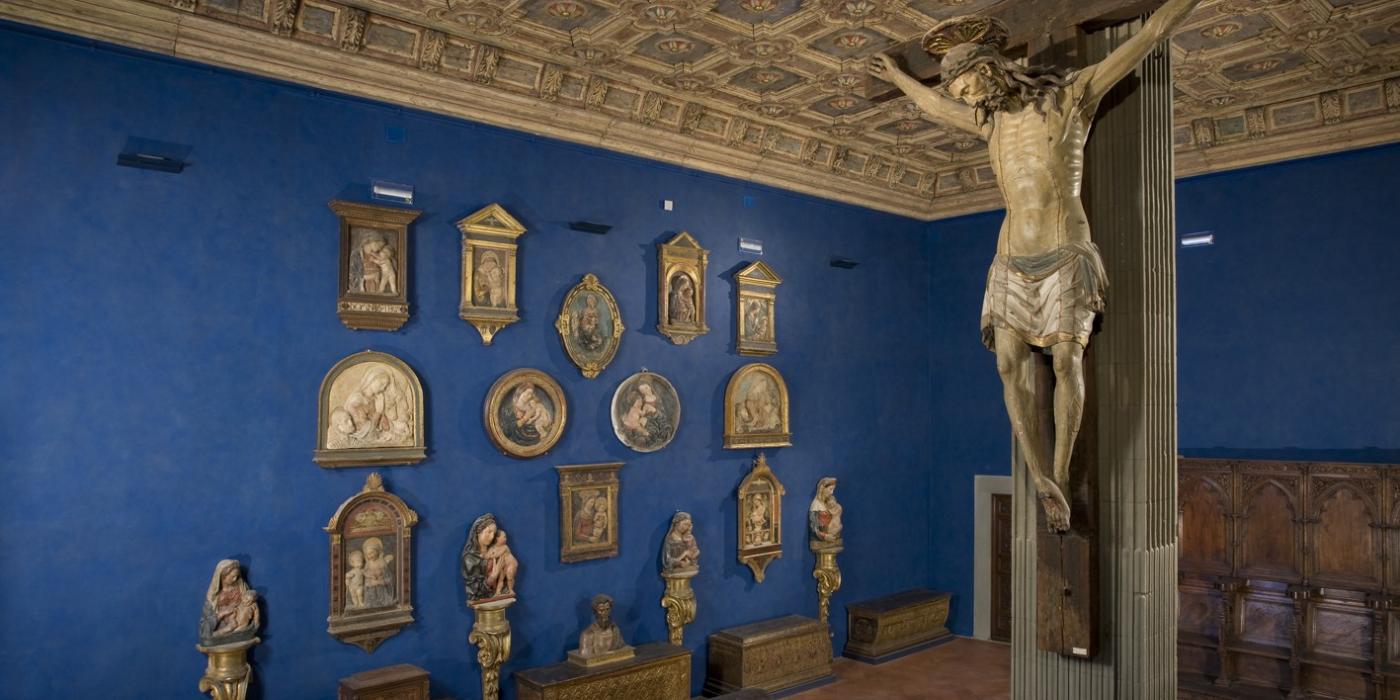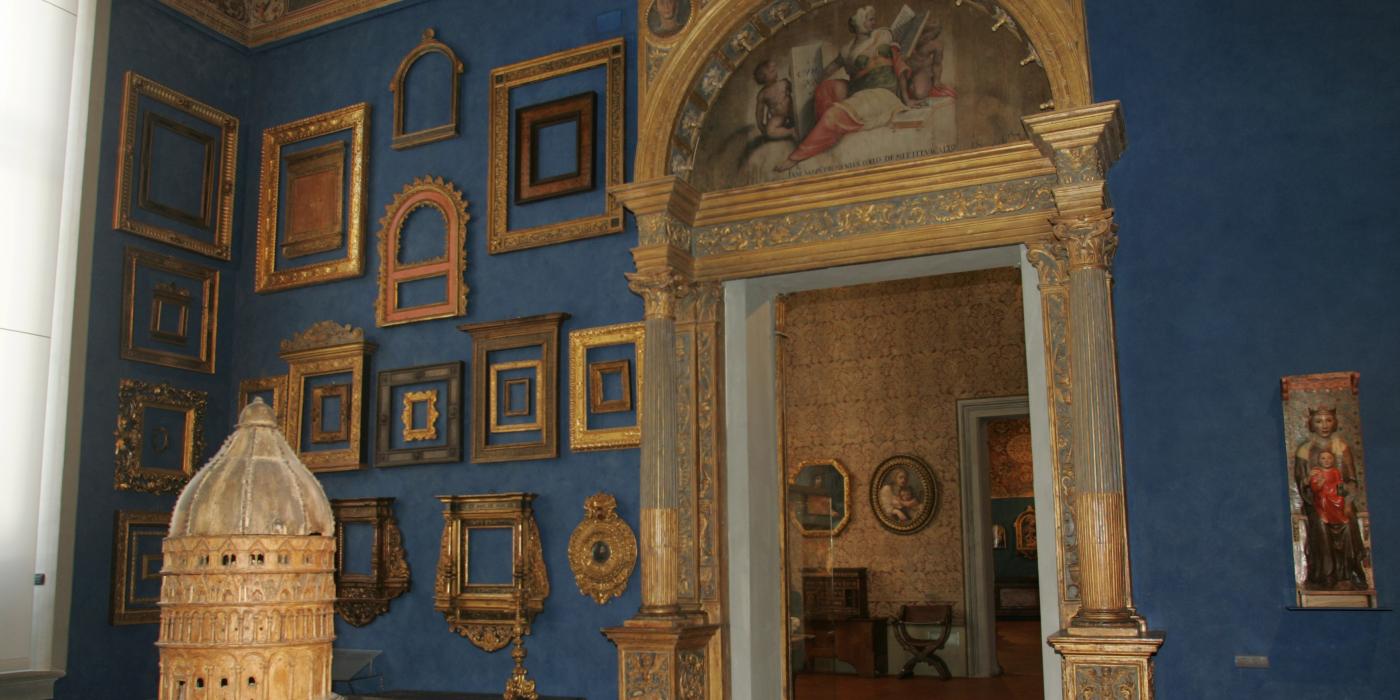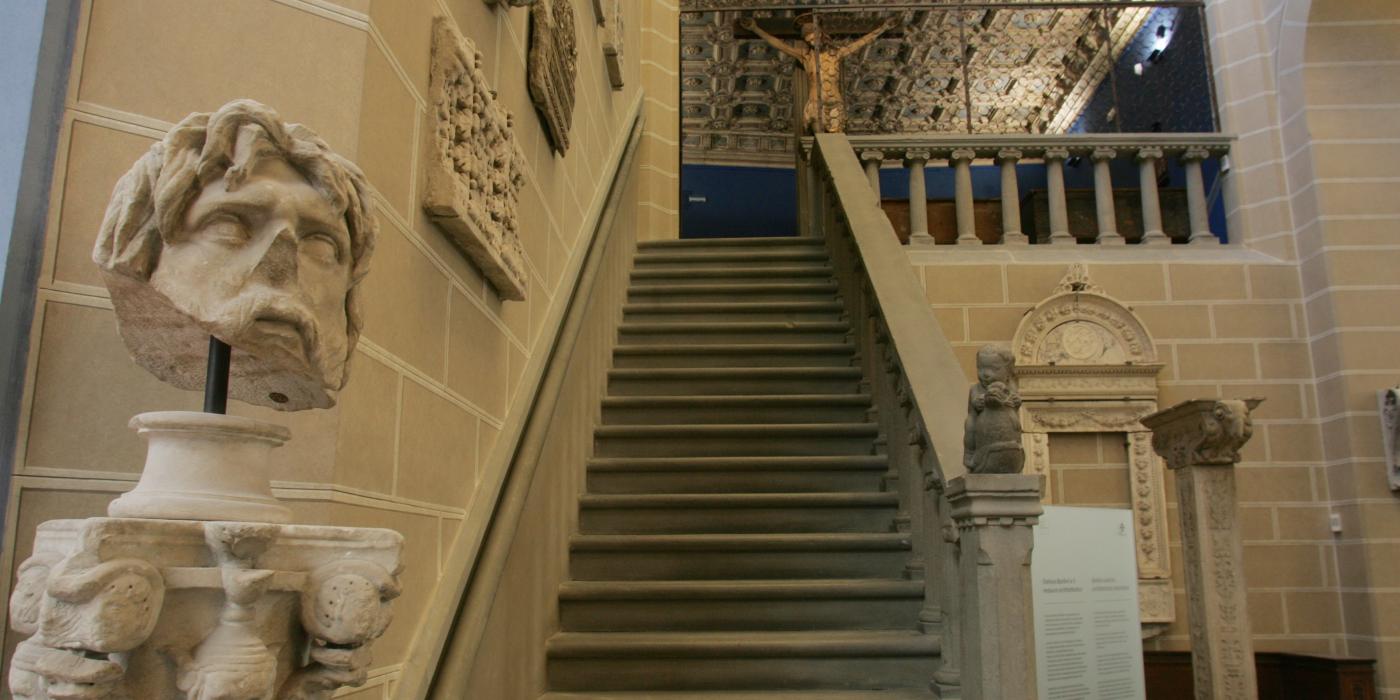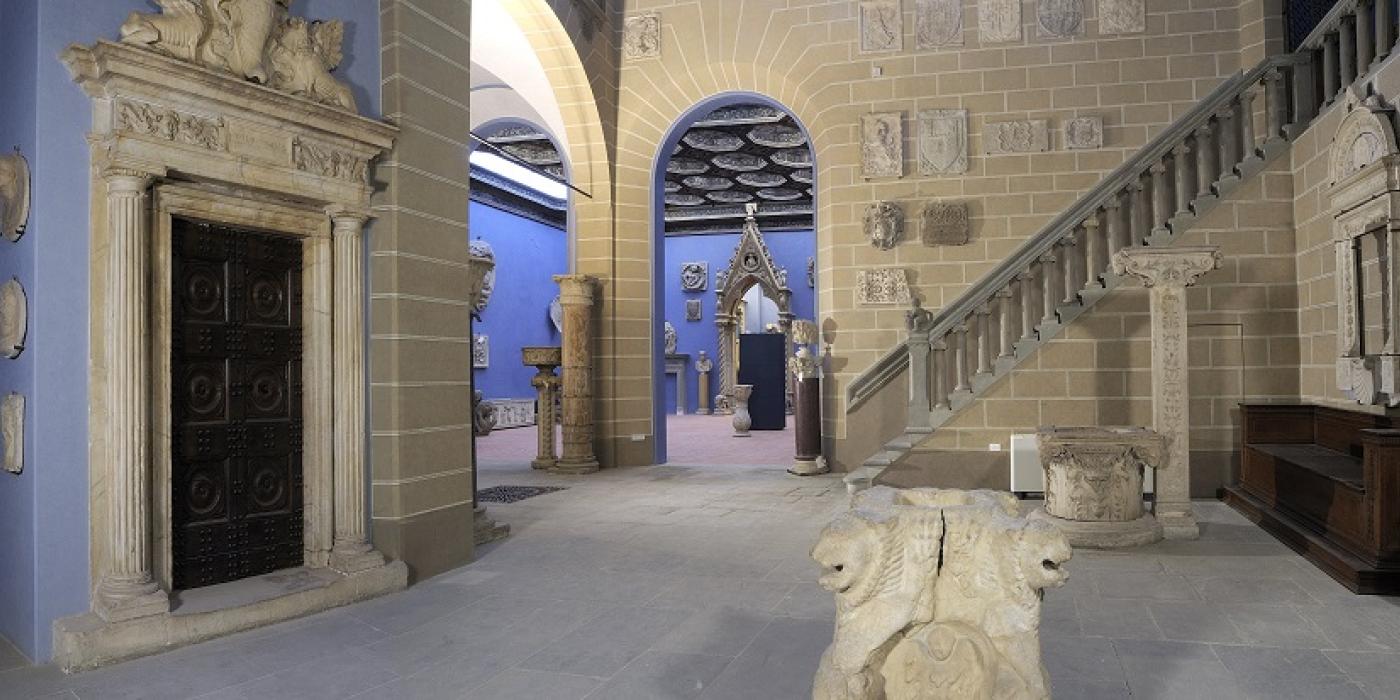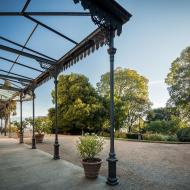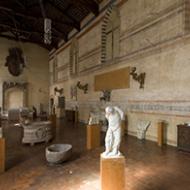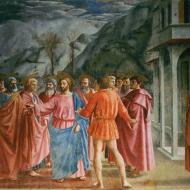The Stefano Bardini Museum, in the Oltrarno district, is named after its founder Stefano Bardini (1836-1922), a renowned Italian antiquarian who, after years of intense business activity, decided to transform his collection in museum and donate it to the City of Florence. The palace that is currently home to the museum was purchased and renovated by Bardini himself in 1881 as a place in which to perform his antiquarian activity. Bardini amassed a collection of what at the time were called “decorative arts,” such as cassoni or painted chests, spalliere or painted furniture, small Madonnas for devotional purposes, busts, and architectural elements from previous centuries of the city. His aesthetic sense of display was much admired, and in fact the museum’s characteristic blue walls were widely imitated in other countries.
At Bardini’s death in 1922, he left everything to the Municipality of Florence, who opened the space as a museum in 1925 with the addition of works from municipal collections. Among the most significant works currently here we can cite the Carità by Tino di Camaino, the Madonna col Bambino and San Giovannino by Benedetto da Maiano, San Michele Arcangelo by Antonio del Pollaiolo, the Madonna dei Cordai by Donatello, L’Atlante by Guercino in addition to ceramics, medals, bronzes, Middle eastern rugs, music instruments, rare 15th century chests, a small but very important series of armoury articles. The original “porcellino” by Pietro Tacca, removed for preservation reasons from the market in Florence, is also housed here.
At Bardini’s death in 1922, he left everything to the Municipality of Florence, who opened the space as a museum in 1925 with the addition of works from municipal collections. Among the most significant works currently here we can cite the Carità by Tino di Camaino, the Madonna col Bambino and San Giovannino by Benedetto da Maiano, San Michele Arcangelo by Antonio del Pollaiolo, the Madonna dei Cordai by Donatello, L’Atlante by Guercino in addition to ceramics, medals, bronzes, Middle eastern rugs, music instruments, rare 15th century chests, a small but very important series of armoury articles. The original “porcellino” by Pietro Tacca, removed for preservation reasons from the market in Florence, is also housed here.
Information:
Address:
via dei Renai 37, 50125 - Firenze, FIPhone:
055 2342427
Access notes:
Direct access from the ticket office and inclusion in the first available visiting time slot.
Last admission is one hour before closing.
Access for disabled:
Photo gallery
Museum timetables:
Related museums
